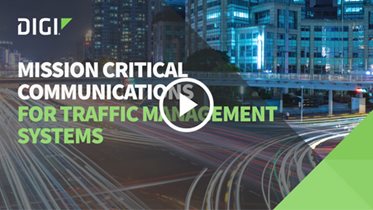围绕更好的交通和公交流改造城市--这一运动现在被广泛称为
机动性 - 城市需要系统和技术来提高公共交通的乘坐率,改善城市拥堵状况,鼓励共享出行系统,减少对单人乘坐的汽油车的依赖。
正在实施的举措包括更高效、更可用的电动汽车充电站,以及方便的自行车租赁服务、
智能交通管理 以减少产生烟雾的交通、
联网汽车计划此外,还为残疾居民提供了更多的出行便利,以及自行车和游船出租车。
这些智能城市为居民带来的好处将是更好的交通流量,无论你是步行、骑自行车还是开车,都能到达目的地,等等。在此过程中,城市居民还将受益于更清洁的空气。
智能城市交通的 "原因
以更少的资源更高效地运送城市中的人口,将对温室气体排放和公众健康产生巨大的积极影响,同时降低医疗成本。支持移动解决方案需求的统计数据令人印象深刻:
- Smart Cities Dive 表示:"空气污染具有可量化的经济成本,"它引用了《美国国家科学院院刊》2019 年的一项研究得出的美元数字,即每年约 9000 亿美元或美国 GDP 的 5%。
- INRIX的一项研究估计,在美国,交通拥堵一年给驾驶者造成的直接和间接成本超过 3050 亿美元,这是一个惊人的数字。这意味着,即使拥堵减少 1%,也能为驾驶者节省 30 亿美元。
- 欧洲审计法院的一项研究发现,空气污染每年在欧洲造成约 40 万人死亡,此外还造成 "数千亿欧元与健康相关的外部成本"。
- 欧盟委员会的另一项研究显示,"城市交通的二氧化碳排放量占公路交通总排放量的 40%"。
- 一些研究表明,自动驾驶汽车可以减少多达 40% 的旅行时间,在提高效率和降低油耗方面都有惊人的进步。
自动驾驶汽车、电动汽车和智能交通管理系统都能发挥作用。本文将介绍智能城市基础设施的一些新发展,并提供一些已经采用这些令人兴奋的新技术的城市实例。
城市化的未来:电动汽车、智能交通管理和其他解决方案
为了改善城市空气质量,减少温室气体排放,城市必须建设配套的基础设施。城市可以采取的行动之一就是建设电动汽车(EV)充电站。这种基础设施不仅能惠及通勤者,还能惠及出租车和电动共享汽车等专业车辆。一个城市的充电选择越多,驾驶者就越有动力转向使用非化石燃料车辆。同时,GPS 系统可以将电动汽车车主引导到最近的空闲充电站,这样他们就不必等待为汽车充电了。
下一代城市可以利用智能交通管理系统来减少交通堵塞。最基本的是 智能交通管理系统 可以识别后备车辆,并向驾驶员发出避开这些区域的警报。然而,这仅仅是个开始。有了更多的传感器和摄像头,智能交通和 人工智能系统 可以在整个城市街道上利用自适应控制,并通过分析数据来预测哪些情况可能导致交通拥堵,并在交通堵塞形成之前疏导司机。
 智慧城市的另一个重要方面是为残疾居民(从坐轮椅的到有视力障碍的)创造更好的体验。其中一项重要的改进就是创建一个更广泛的公共交通网络,为残疾人提供更好的服务和通道,并为残疾人提供路线通知。
智慧城市的另一个重要方面是为残疾居民(从坐轮椅的到有视力障碍的)创造更好的体验。其中一项重要的改进就是创建一个更广泛的公共交通网络,为残疾人提供更好的服务和通道,并为残疾人提供路线通知。
共享乘车服务的发展表明,需要有解决方案来解决 "最后一英里问题",并减少每个城市居民拥有私人车辆的需求。如今,Uber 和 Lyft 等服务已成为共享出行的主流。随着人工智能和其他使能技术的成熟,这些共享乘车服务很可能会被城市拥有的自动驾驶车队所增强,并通过人工智能管理的路线规划实现最高效率。
随着城市的老龄化,这些服务将变得越来越重要。 估计 在 2035 年至 2050 年期间,将有 16 亿人超过 65 岁。这将对大城市的交通服务产生巨大需求,这意味着现在就规划和建设基础设施非常重要。
Digi 客户聚焦:智能城市解决方案
Digi 的客户案例提供了很好的范例,说明了正在开发和部署的一系列智能解决方案,以解决城市面临的交通、环境和基础设施挑战:
智能城市交通项目:创新与成本节约
正如我们已经讨论过的,交通项目的目标有很多,从减少拥堵和碳排放到改善残疾人服务和成本因素。令人惊讶的是,许多正在部署新技术和进行基础设施升级的城市发现,这样做可以为他们省钱。
例如,正在部署高性能蜂窝路由器的城市,如果采用了公共和私人数据组合解决方案、双 APN 和蜂窝故障转移等技术,就可以取代多种旧产品和维护成本高昂的有线基础设施。它们还可以改进预测性维护方法,在系统出现故障并导致停机之前,就能确定系统所需的维修。
请参阅我们最近发布的 "美国 12 大智能城市 "一文,其中的一些优秀案例展示了智能城市项目的广泛性,尤其是我们评选的第一名--纽约市,它在全市的街角部署了数千台蜂窝路由器,以改善交通流量、减少拥堵并提高应急响应能力。
欧洲也有许多正在开发的智慧城市项目。例如,哥本哈根就有一个很好的数据共享系统。智慧城市项目可以获得有关市民和企业的基本信息,并利用这些信息发展自己的平台,为城市居民提供更好、更高效的服务。一个具体的例子是哥本哈根连接项目,该项目利用手机和其他设备的数据来管理交通,并为司机提供停车位等信息。
前进之路
世界各地的城市都在评估和部署能够改善交通、空气质量和生活质量的解决方案,以解决从交通堵塞到气候变化等一系列问题。智能城市是未来的发展方向,在 Digi,我们很高兴能继续探索各种方法,支持智能城市利用最新技术改善居民的生活和移动性。
联系我们,开始对话。Digi 专家可以帮助您确定正确的技术来实现您的目标,并支持设计、开发和部署,为您的城市的未来铺平道路。